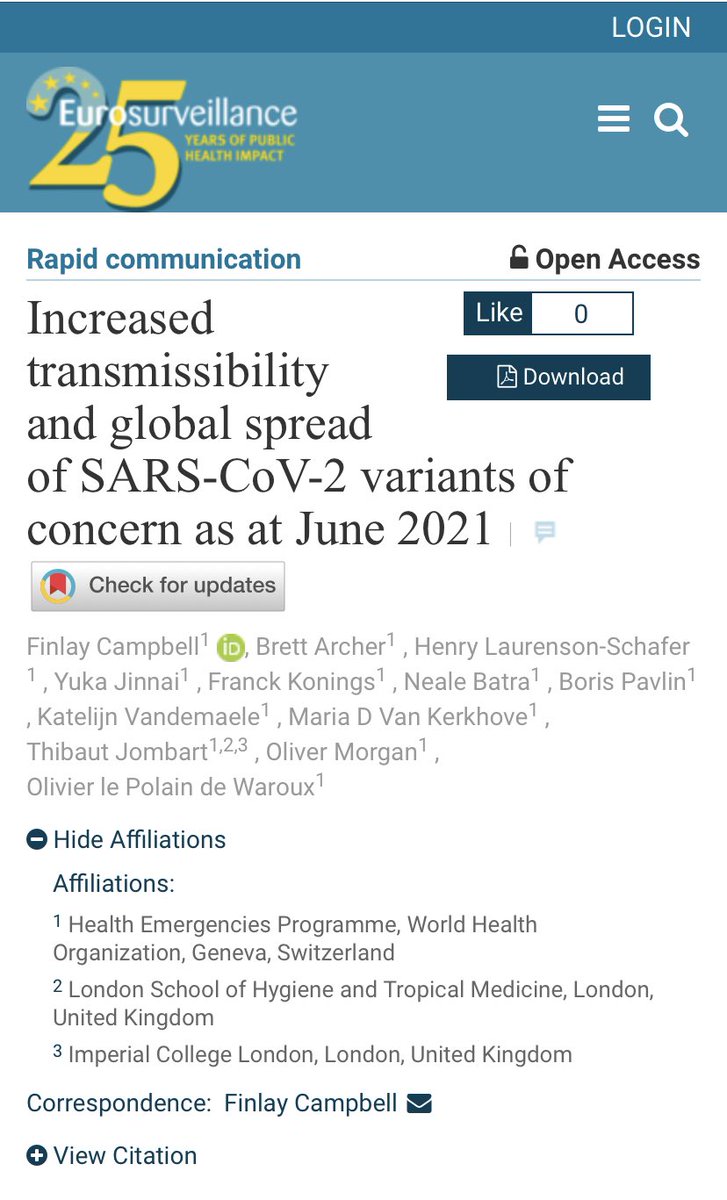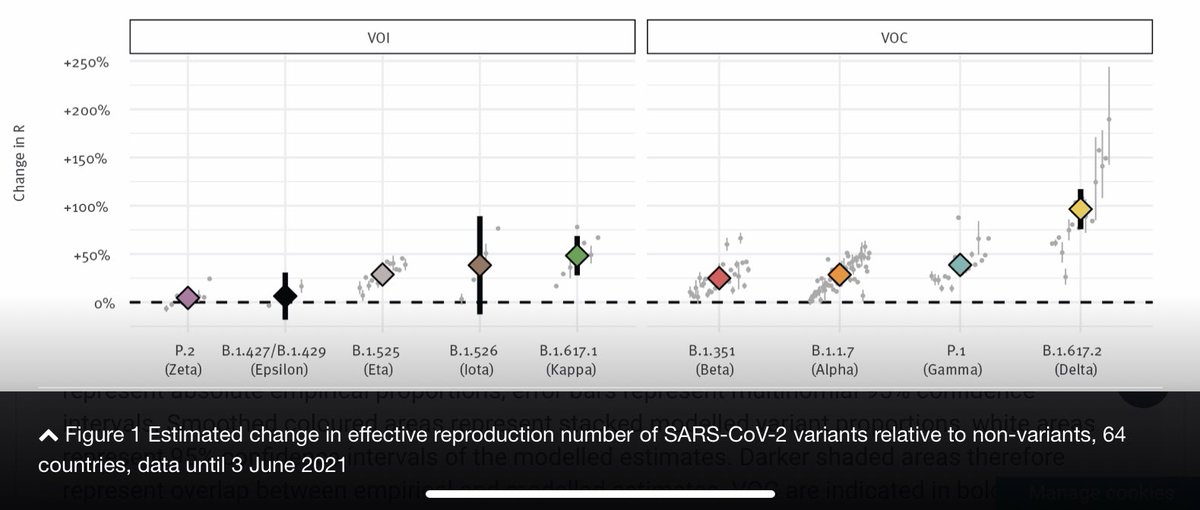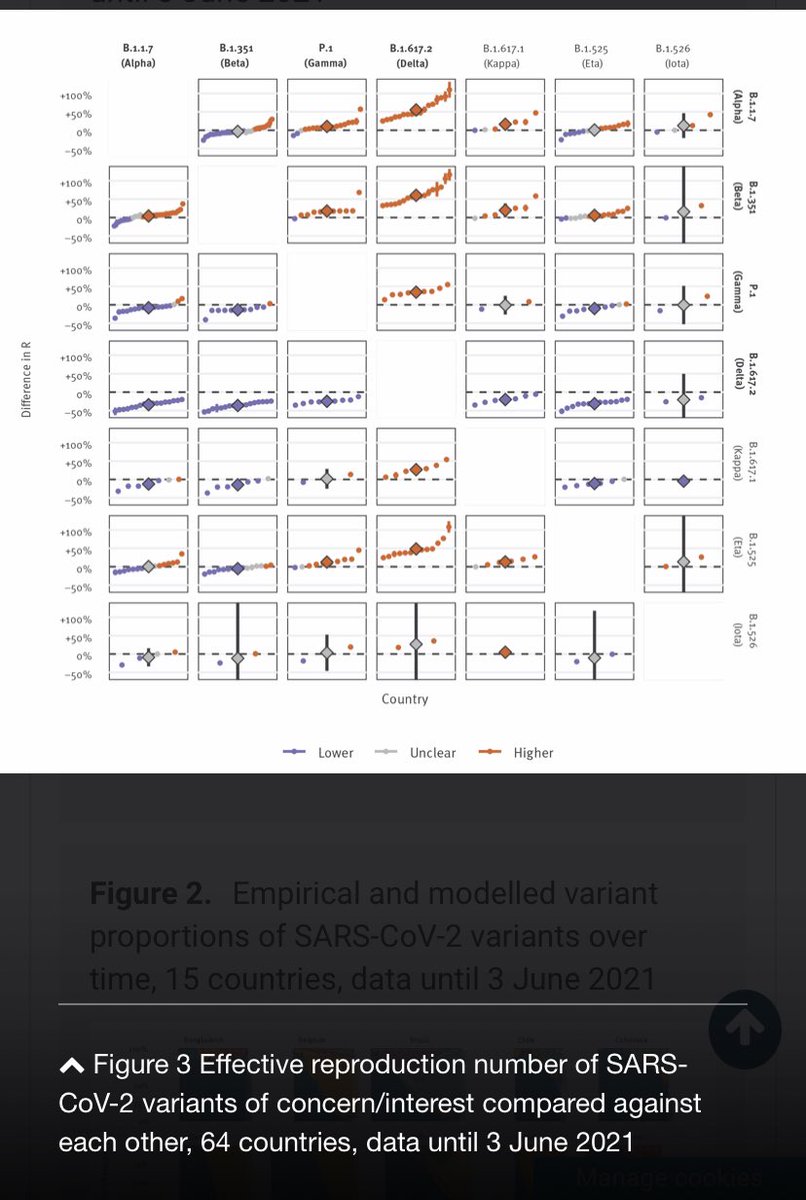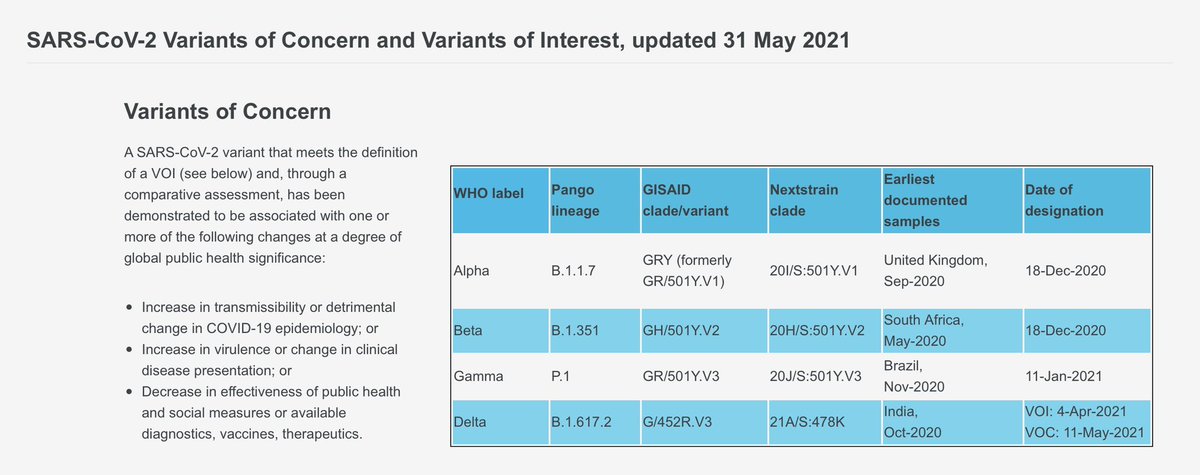
Statement on the eighth meeting of the International Health Regulations #IHR (2005) Emergency Committee regarding the coronavirus disease (#COVID19) pandemic @WHO
who.int/news/item/15-0…
who.int/news/item/15-0…
The @WHO secretariat highlighted factors driving the current situation including:
➡️variants of concern,
➡️inconsistent application of public health & social measures,
➡️increased social mixing & mobility, &
➡️highly susceptible pop due to lack of equitable vaccine distribution
➡️variants of concern,
➡️inconsistent application of public health & social measures,
➡️increased social mixing & mobility, &
➡️highly susceptible pop due to lack of equitable vaccine distribution
https://twitter.com/WHO/status/1413230703605600259
“The Committee noted that, despite national, regional, and global efforts, the pandemic is nowhere near finished. The pandemic continues to evolve with four variants of concern dominating global epidemiology…. 
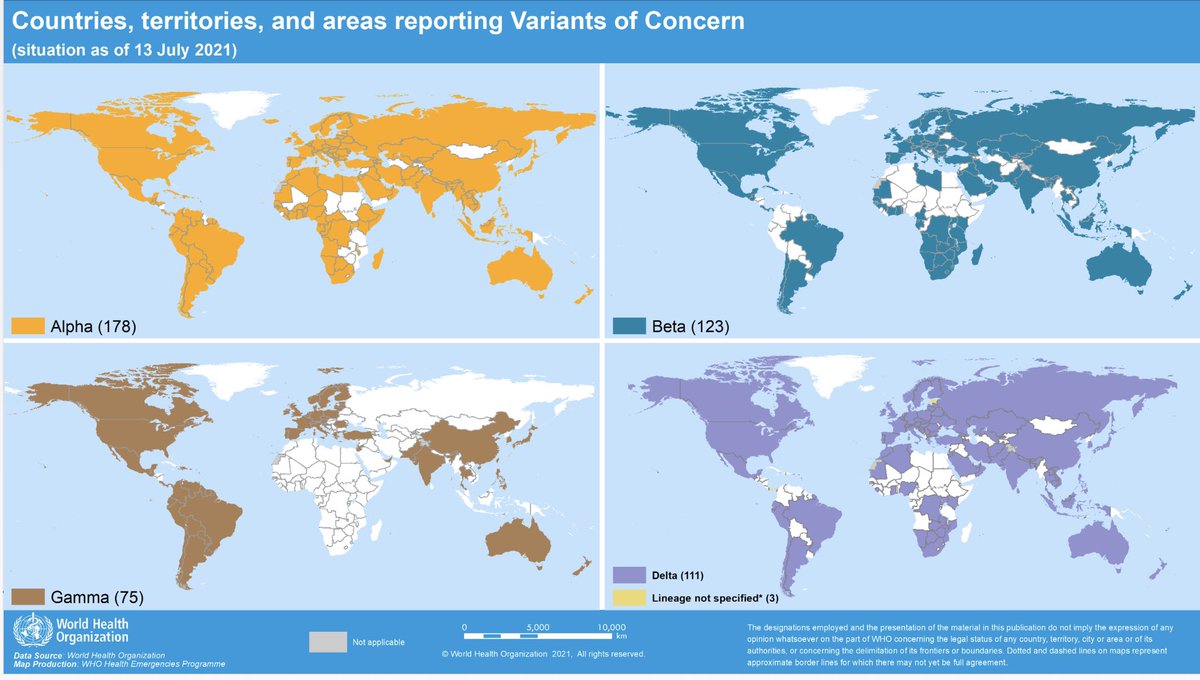
…The Committee recognised the strong likelihood for the emergence and global spread of new and possibly more dangerous variants of concern that may be even more challenging to control. “
• • •
Missing some Tweet in this thread? You can try to
force a refresh



